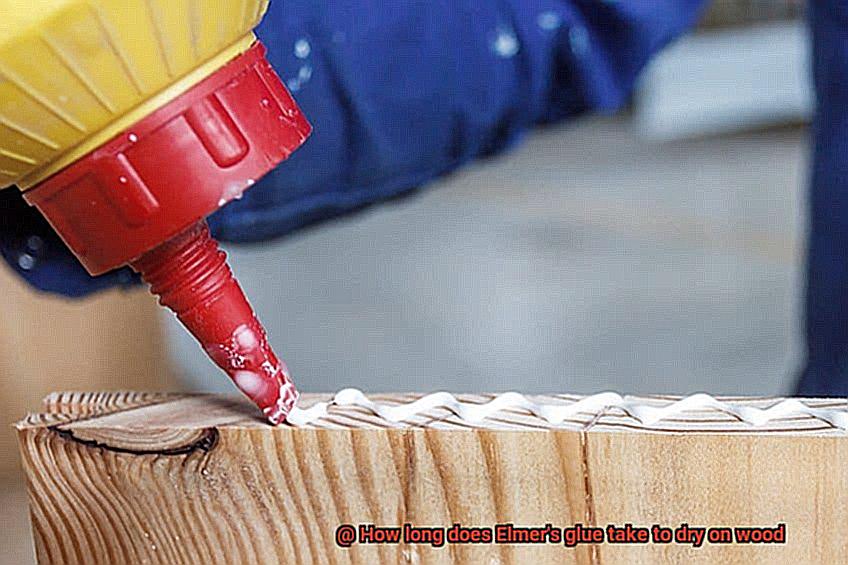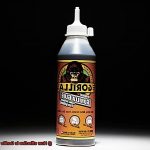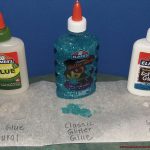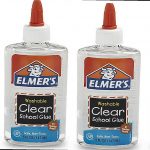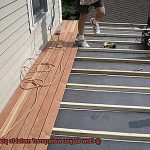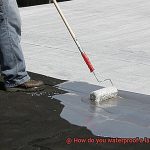Woodworking is an art form that requires skill, patience, and attention to detail. And when it comes to bonding wood together, Elmer’s glue is a must-have tool in your arsenal. But have you ever wondered how long it takes for this adhesive to dry on wood?
The answer isn’t as straightforward as you might think. The drying time of Elmer’s glue can be influenced by various factors such as temperature, humidity, glue ratio, and application technique. Sometimes it dries quickly in just a few minutes, while other times it may take several hours. Knowing the drying time of Elmer’s glue is crucial when planning your woodworking project timeline.
In this blog post, we’ll dive into the nitty-gritty details of how long Elmer’s glue takes to dry on wood and what factors impact its drying time. We’ll also share some best practices for applying and using Elmer’s glue so that you can achieve a strong bond every time. From clamping to sanding after the glue has dried, we’ve got you covered.
But wait, there’s more. We’ll also bust some common myths about Elmer’s glue and highlight why this popular adhesive is a go-to choice for many woodworkers out there. Whether you’re a seasoned pro or just starting with woodworking projects, this post will provide valuable insights into achieving a successful and durable bond with Elmer’s glue. So let’s get started.
What is Elmer’s Glue?
Contents
Elmer’s Glue is a true household name and a staple in schools, offices, and households alike. But what exactly is Elmer’s Glue, and why is it so beloved?
At its core, Elmer’s Glue is a type of polyvinyl acetate (PVA) glue that is made by combining water with a synthetic polymer. It comes in various forms such as liquid, gel, and stick and can bond an array of materials, including paper, wood, fabric, and even plastic.
One of the standout features of Elmer’s Glue is its non-toxicity and safety for children. It’s also incredibly easy to clean up with just soap and water. However, what really sets this adhesive apart is the strength of its bond. Once dried, Elmer’s Glue creates a transparent but sturdy bond between the materials being glued together.
The brand itself has an interesting backstory. Elmer’s Glue was first introduced in the 1940s by Borden, Inc., an American food and beverage company. The name “Elmer” was inspired by the founder’s bull terrier dog, whose image was used as the company’s logo. Today, Elmer’s Glue is owned by Newell Brands and continues to be a trusted brand for adhesive products.
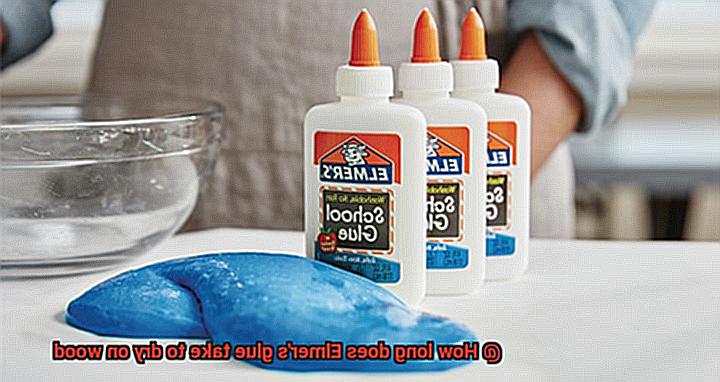
When it comes to woodworking projects involving wood surfaces, drying time is crucial. Factors such as wood type, glue thickness, humidity levels, and temperature can all influence how long Elmer’s Glue takes to dry on wood. Certain types of wood are more porous than others and will absorb more glue, which means they will also take longer to dry. A thicker layer of glue also takes longer to dry than a thin layer.
To ensure optimal drying times and strong bonds between wood pieces, it is recommended to work in a well-ventilated area with temperatures ranging from 70-80 degrees Fahrenheit. Higher temperatures and lower humidity levels can speed up the drying process, while lower temperatures and higher humidity levels can slow it down.
While Elmer’s Glue typically takes around 24 hours to dry completely on wood surfaces, it’s important to allow for extra drying time for thicker layers or less than optimal conditions. It’s also worth noting that even if the glue appears dry on the surface, it may not be fully cured until after several days or even weeks.
Factors Affecting Drying Time of Elmer’s Glue on Wood
We have researched and compiled a list of factors that can affect the drying time of Elmer’s glue on wood.
Temperature and Humidity
First up, the temperature and humidity of your working environment can have a significant impact on how quickly Elmer’s glue dries. High humidity levels can slow down the evaporation process, causing the glue to take longer to dry. In contrast, low temperatures can also slow down the drying process. Therefore, it is crucial to apply Elmer’s glue in an environment with moderate humidity and temperature levels.
Type of Wood
The type of wood being glued can also affect the drying time of Elmer’s glue. Softwoods such as pine or cedar, which have high moisture content, will take longer to dry than hardwoods like oak or maple. This is because the moisture in the wood can slow down the evaporation process of the glue. So, if you’re working with softwood, be prepared for a longer drying time.
Amount and Type of Glue Used
The amount and type of glue used can also affect drying time. Applying too much glue can extend the drying time as it takes longer for all layers to dry completely. Similarly, using a thicker consistency of Elmer’s glue will also result in longer drying times compared to using a thinner consistency. So, it’s important to use the right amount and type of glue for your project.
Application Method
The method used to apply the glue can also affect drying time. Applying a thin layer of glue with a brush or roller will dry faster than applying a thick layer with a trowel or spatula. So, if you’re looking for faster drying times, use a thin layer of glue and apply it with a brush or roller.
Pressure and Clamping Time
Lastly, applying pressure to the glued surfaces by clamping them together can help speed up the drying process. The longer you clamp the surfaces together, the faster the glue will dry. However, it is important to ensure that the pressure applied is not too much, as it can cause excess glue to squeeze out, resulting in a mess.
Type of Wood
The porosity of the wood is a key factor in determining the drying time. If you’re working with a porous wood like pine, the glue will dry faster than if you’re using a dense hardwood like oak. This is because the pores in the wood allow the glue to penetrate deeper and evaporate more quickly.
Another important consideration is whether or not the wood has been treated. If it has been previously sealed or coated, it may take longer for the glue to dry as it will have a harder time penetrating the surface.
Moisture content is another factor that can impact drying time. If the wood is too moist, it can prolong the process and potentially weaken the bond created by the glue. So, using dry wood when applying glue is recommended for optimal results.
It’s essential to remember that while drying times may vary depending on the type of wood, it’s recommended to allow 24 hours for full curing of the glue before handling or sanding the wood. Taking into account these factors ensures a successful and long-lasting bond between your wood pieces.
Thickness of the Glue Layer
To start with, let’s understand that the thickness of the glue layer is a critical factor in determining the drying time. The thicker the layer of glue, the longer it will take to dry. This is because the moisture in the glue needs to evaporate before it can fully dry and bond with the wood.
If you’re working with a thin layer of Elmer’s glue on wood, you can expect it to dry within 30 minutes to an hour. However, if you’re applying a thicker layer or multiple layers, it may take several hours or even overnight for the glue to fully dry and bond with the wood.
But wait, there’s more. You need to keep in mind that humidity and temperature can also affect the drying time of Elmer’s glue on wood. In humid environments, the moisture in the glue may take longer to evaporate, resulting in a longer drying time. Similarly, if you’re working in cold temperatures, the glue may take longer to dry as well.
To ensure your Elmer’s glue dries properly on wood, follow these tips: apply a thin and even layer of glue. Avoid applying too much glue or multiple layers at once, as this can prolong the drying time and result in a weaker bond.
Humidity and Temperature
Well, the secret to quick-drying lies in two crucial factors: humidity and temperature.
Humidity refers to the amount of moisture in the air, and it can significantly impact how long it takes for Elmer’s glue to dry. High humidity levels can prevent the glue from evaporating efficiently, leading to a slower drying process. Conversely, low humidity levels can speed up the drying time as there is less moisture in the air to interfere with the process.
Temperature is another critical factor that affects how quickly Elmer’s glue dries on wood. In warmer temperatures, the heat increases the rate of evaporation and, as a result, speeds up the drying process. In contrast, colder temperatures can slow down the drying process as it reduces the rate of evaporation.
However, it’s important to note that extreme temperatures can have adverse effects on Elmer’s glue. Exposure to high temperatures can make the glue brittle and prone to cracking. Similarly, exposure to very low temperatures can cause the glue to remain sticky and not dry at all.
Therefore, if you want a successful bond with Elmer’s glue on wood, it’s crucial to consider both temperature and humidity levels. Apply a thin and even layer of glue without multiple coatings for optimal results. Always take into account your working environment’s temperature and humidity levels to ensure efficient and effective results.
General Drying Time for Elmer’s Glue on Wood
Before you begin, it’s essential to know the general drying time of Elmer’s glue on wood. The drying time can vary based on several factors, including humidity, temperature, amount of glue applied, and the type of wood used.
Typically, Elmer’s glue takes around 30 minutes to 1 hour to dry on wood surfaces. However, this is just a general estimate, and it’s important to note that the actual drying time can vary. Factors such as the thickness of the layer and the type of wood used can also affect drying time.
While the glue may appear dry after an hour, it may not be fully cured. To ensure a strong bond, it’s recommended to wait at least 24 hours before handling or sanding the glued surface. This wait time will allow the glue to fully cure and provide a durable hold.
Humidity and temperature play crucial roles in determining the drying time of Elmer’s glue on wood. In humid conditions or colder temperatures, the drying time may increase. It’s best to avoid using Elmer’s glue in extremely humid or cold conditions as it can affect the quality of the bond.
When applying Elmer’s glue on wood, it’s essential to use a thin and even layer for optimal results. Using too much glue can extend the drying time and result in a weaker bond. Additionally, different types of wood may absorb the glue differently, which can affect the overall drying time.
gnG0FNxisvk” >
Also Read: How Long Does Super Glue Take to Dry?
Conclusion
In conclusion, the drying time of Elmer’s glue on wood is a complex matter that requires careful consideration. A variety of factors come into play, including temperature, humidity, glue ratio, and application technique. To achieve a strong bond between wood pieces, it’s crucial to take these factors into account when planning your woodworking project timeline.
Elmer’s glue is a popular adhesive choice for many woodworkers due to its non-toxicity and child-friendly nature. What sets this adhesive apart is the strength of its bond once dried. It’s also incredibly easy to clean up with just soap and water.
However, not all woods are created equal when it comes to drying times. Softwoods like pine or cedar will take longer to dry than hardwoods like oak or maple due to their high moisture content. Similarly, applying too much glue or multiple layers at once can prolong the drying time and result in a weaker bond.
To ensure optimal drying times and strong bonds between wood pieces, work in a well-ventilated area with temperatures ranging from 70-80 degrees Fahrenheit. Applying pressure to the glued surfaces by clamping them together can help speed up the drying process.
In general, Elmer’s glue takes around 30 minutes to an hour to dry on wood surfaces. However, it’s recommended to wait at least 24 hours before handling or sanding the glued surface for full curing of the glue.
So there you have it – taking into account these factors ensures a successful and long-lasting bond between your wood pieces with Elmer’s glue.

